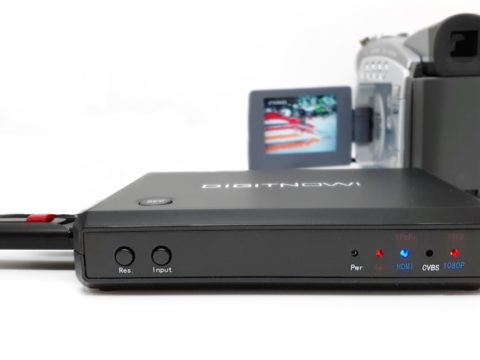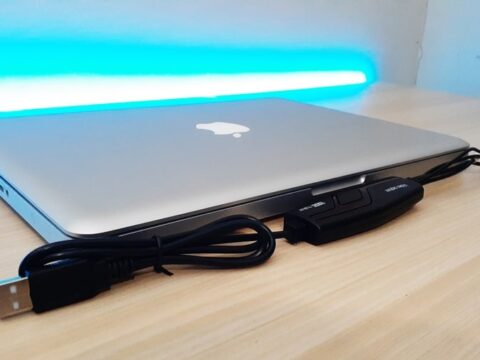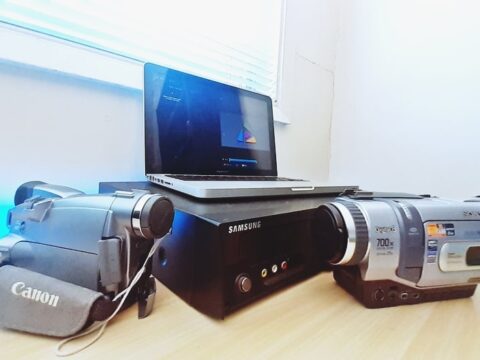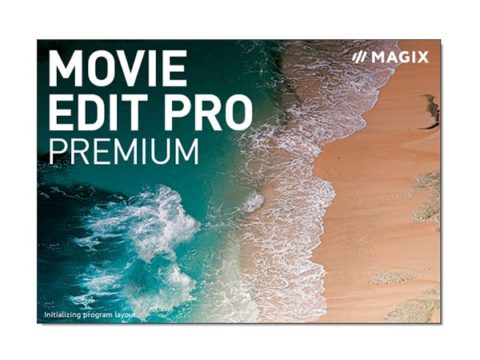
Converting super 8mm films to digital or DVD doesn’t have to be painful thanks to this simple device by Wolverine Data.
In 1988 I started working for a popular Kodak store in Sydney Australia which was the main spot for customers to drop their Kodachrome and Ektachrome slide films to be developed.
They would also drop 8mm films and Super 8 films to be processed as well.
While popular, those films were on their way out by that time. Yes I know you can still buy the films and get them processed, but let’s be honest, it’s not as popular as its booming time in the 70’s!

But where does that leave all the old nostalgia films and footage of kids growing up in this digital age? You can’t just throw away those memories.
If you’re trying to digitize old 8mm films you could buy a projector from Ebay and try and film the footage as it plays against a wall. I’ve never done that, but some people claimed it works.
- A fully automated apparatus to digitize 8 and Super 8 Movie Reels FramebyFrame digitizing for highquality digital...
- 8mm or super 8 media must be mounted in with proper reelup to 5 in diameter and adapter before recordingrewinding
Last update on 2024-11-21 / Affiliate links / Images from Amazon Product Advertising API
Or you could take the initiative and buy the Wolverine Reels2digital MovieMaker.

This device (I’m going to call it device as the name is way too long) comes in two varieties the Reels2digital and Film2digital the differences being:
- smaller version only outputs to 720p
- smaller version can only take reels up to 5 inches in size
- larger version can output to 1080p
- larger version can take reels up to 9 inches in size
An interesting thing I noticed is that there’s another machine absolutely identical to the smaller Reels2digital version here.
I don’t know which one came first but the Wolverine company has a better reputation from what I’ve seen.
A Closer Inspection

From left to right we have:
- View screen – telling you which mode, the exposure level, whether you are recording and recording number.
- Power Button – For turning on the device.
- Menu Button – which will show you the different modes.
- Up/Down Buttons – For navigation through modes.
- Enter Button – To confirm a selection and to start and stop the recording process.

Along the back we have:
- USB port – allows you to connect the device to a computer so you can read the memory card inside.
- TV OUT – a cable connection allowing you to view onto a TV.
- SD card slot – For recording the 8mm/super8 films. Maximum card capacity it will accept is 32GB.
- DC out – electricity outlet.

Speaking of electricity outlet you will need to purchase one separately so the machine can work in any country.
The above picture shows an adapter I used.
So let’s look further into the menu before we do any recording.
What’s on the menu?

A quick word of warning: This device needs an SD card inserted before turning on the power. If you don’t you will just get a message saying ‘Insert SD CARD and reboot’.
Upon initial boot up, clicking the Menu Button will present all the different modes at your disposal using the up/down buttons.
- RECORD – Click enter when you’re ready to start recording.
- PLAYBACK – Click enter if you want to watch what has been recorded. (personally, I’ve never used it but it is great to have in the rare case)
- REWIND – Once the 8mm film has finished, by swapping the reels over then clicking enter, you can proceed to rewind the film back to its original reel.

- EXPOSURE – This allows to adjust how light or dark the film will appear. I don’t bother changing the exposure as I rather do that in an editor with more control.
- SHARPNESS – Allows to sharpen the image slightly. Keep in mind if the film was recorded out of focus (as the cameras back then were manual focus anyway) this sharpen function will not magically make an out of focus image clear again.
- USB – allows you to connect to a computer and read the SD card as a drive letter to access the videos. (Or you could use a card reader to read the files anyway).

- FRAME ADJ – Adjusts the frame before the recording starts. This function you will be using quite a bit.
- LANGUAGE – changes from Japanese or English.
- FORMAT – Formats the SD card so no other folders or files will be on there except created by the device.

- DEFAULT SETTINGS – click this to change everything to factory default.
- VERSION – Software version it is currently running.

Along the front of the MovieMaker is a lever to switch between standard 8mm film and Super8 film. The instruction manual shows a diagram of the difference between the two.
Worst case scenario, you could always fiddle with the front lever to see how the film sits evenly within the little screen if you don’t know which type of film you have.

Also to note you might want to purchase an air spray as the light box will start to gather dust and particles after every film it scans. Especially if the 8mm films have been sitting in old boxes.
Threading 8mm Film Through the Wolverine

The latch along the film carrier points in the direction to open it. Once open, you will see two WHITE tabs on either side of the scanner.
When you thread the film under the tabs, make sure the sprocket holes are facing the white tabs.

Once you have threaded the film through the scanner gate, close the latch down. You can still pull the film through and it won’t slip out.
Make sure you have the supplied take up reel sitting in place on the right hand side.

The end of the film will fit into a slot . You may have to bend the end to keep it in place.

Allow more film to be pulled through the gate then follow the pattern on the MovieMaker to tighten the slack.

You can spin the reel to make sure the film will stay in place.

Looking at the screen, we can see the frame of the 8mm film is not correct.
Click the menu button, then the down arrow until you see the Frame Adjust option.

Click on enter where you will see new adjusting options.

The three options for adjusting are:
- X – adjusts the image left or right.
- Y – adjusts the image up or down.
- W – allows you to zoom in or out.
So when you click Enter you will be able to adjust the image using the up/down arrows. When you are satisfied with where the image is placed press Enter again to adjust the next setting.
To escape press the Menu button.


The two images above show how I had to keep adjusting the image to the center.

I select Menu once again. Click the arrow up button to get back to Record mode, then push Enter.

The MovieMaker will start to record one frame at a time. Recording from a small 5 inch reel can take an hour. The larger reels I’ve found to take up to four hours.
Can things go wrong?
Yep.
But it’s not the MovieMaker’s fault.
Sometimes the device can jam due to broken sprocket holes, bad splicing or joining of films together. I had one film so curled and brittle, there was no way you could thread the film through.
But again, that’s not MovieMaker’s fault. Most films don’t have issues.
Transferring 8mm film into MP4 format

Once the MovieMaker has finishes scanning the 8mm film you can take out the SD card and insert it into a card reader or if you don’t have a computer that can read an SD card you can use a USB cable to plug the MovieMaker into your computer.
This will give you access to the card and its files. I suggest you copy them over to your computer before you edit them.
The first folder you will see will be called FilmScanner. Open that folder.

Next folder is where the files are kept. Open that folder.

This example you can see all the files that are from the MovieMaker.
The start of the 8mm film had issues with the sprocket holes so I had to start and stop a few times. The files I decided to use were 0117, 0118 and 0119.

I import theses files into an video editor in order to splice them together.

The end result of this example video is only approx 4 mins long after editing.

Once happy with the editing, I click file/export and change the settings to MP4.

Let the editor render out the video.

And finally test the results.
Once the file has been rendered into a MP4 format, it makes it easier to copy to any modern tablet, phone or computer.
You could easily upload the video to the internet if you wanted to share with family.
Conclusion
Do I recommend buying this? Absolutely. Could a transfer specialist do a better job? Possibly.
If you have alot of reels that need converting, buying one of the Wolverine MovieMaker scanners will work out much cheaper than getting the films converted elsewhere.
Personally I’m glad these types of scanners have been created for the consumers because it means memories will not get forgotten for future generations.





